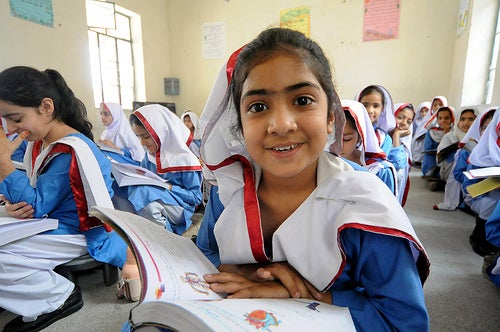
This was originally published on Pearson's Affordable Learning blog.
In many developing countries, the government remains the main financier and the dominant provider of education. The demand for quality education continues to increase while resources remain scarce, making education inaccessible to a significant part of society.
An innovative way of financing education is via cash transfers to schools based on enrollments or by providing cash to families to purchase schooling – in other words- through vouchers. Another way is to reach education providers directly and ensure they deliver the services by fulfillment of a contract such as Charter Schools (in the USA), Academies or Free Schools in the UK or concession schools in Colombia, which are examples of this mechanism. The objective in both cases is to extend financial support from the government to providers and parents and promote access to quality education. Advocates of these systems argue that this will lead to efficiency gains, as schools – public and private – vie for students and try to improve quality while reducing expenses.
Most of the examples of voucher programs and contract based school-management come from developed, high income countries such as the United States or from parts of Europe, however, more recently examples from middle-income countries such as Chile and Colombia have emerged.
In order to truly further development, we need to see more experimentation in education delivery from low-income countries. This trend is emerging, for example, in Sub-Saharan Africa (SSA), while the public sector has historically been the major provider of education, the diverse private sector now increasingly appears to be stepping in, to fulfill a demand that the public sector is unable to meet.
Over the past decade, private school enrollment has grown rapidly in Kenya. This trend was driven by the abolition of fees in public primary schools in 2003, and the subsequent decline in the perceived quality of public schools. Survey data on households' education expenditure show that Kenyan private schools operate at low cost relative to public schools: nearly two-thirds of pupils in the private system pay fees less than the median per-pupil funding level in government schools. A recent paper estimated the causal effect of private schooling on test performance for Kenyan primary school students using nationwide standardized test scores and found an exam performance premium of one standard deviation delivered by private schools.
In South Asia, partnerships between public authorities and non-state providers such as NGOs, communities and commercial operators are helping expand education opportunities and quality.
International donors, including the World Bank, are working with the Government of Punjab in Pakistan to improve education for school children through a range of initiatives, from cash stipends and low-cost private schools to more effective school councils. The World Bank’s Punjab Education Sector Project helps provide stipends to 380,000 female students in grades 6-8, free textbooks to all students in public schools, improved access to quality education for over 857,096 students – more than half of whom are girls – in 1,768 low cost private schools, as well as capacity support to 54,000 school councils. Foundation-Assisted Schools of Punjab Education Foundation have expanded from 18 to 29 program districts in the province, reaching 857,096 children in 2011 from 576,669 children in 2008. Impact evaluation results for these schools show that the program has raised enrollment by 40 percent and student achievement by 0.3-0.5 standard deviations within two years, roughly contributing to one-to-two additional years of learning at school. This is an example of how low cost private schools are adding great value to education systems around the world.
While maintaining that basic education services remain a public responsibility, governments have at their disposal several options for ensuring that education imparted is of an acceptable quality without actually being the main provider of education. Publicly financed but privately provided education is one such option. Private management of public institutions is another. In addition, there are several mechanisms for financing private involvement in the education system. In other words, a case can be made for public finance in education, but the provision of schooling need not be public. Nevertheless, all innovative models should be rigorously evaluated.


Join the Conversation